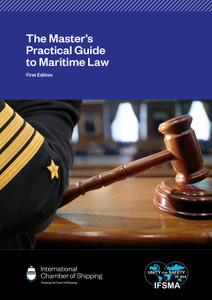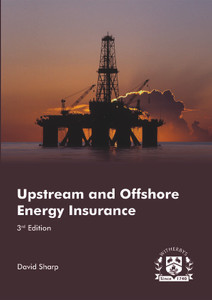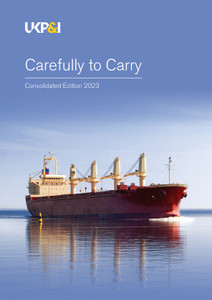
This is a comprehensive guide to underwriting and claims practices, written with incredible depth and insight by a practitioner with over 40 years’ experience in different markets. It discusses the basic concepts of marine cargo insurance, the impact of the Insurance Act 2015, developing case laws, Institute and trade clauses, non-Institute clauses, rejection risks, the need for careful wording of policy terms, adjustment of claims, etc.
This 527-page book on cargo insurance contains an exhaustive commentary on the current Institute and trade clauses, important case laws, the Insurance Act 2015, Incoterms Rules 2020, insurable interest and the need for reforms, contingency covers and possible gaps in coverage, a critical look at open covers, etc.
There are two chapters on claims, including proximate/concurrent causes, burden of proof, treatment of rate of exchange fluctuation, higher cost of repairs by OEM, reinstatement of manufacturers’ warranty, TPND, piracy, replacement clauses, etc.
Insuring Cargoes becomes the only book to devote complete chapters to rejection risks, contract certainty, delay and inherent vice, non-Institute (broker) clauses, physical versus non-physical losses, and recoveries. A very detailed list of documents for partial and total loss claims involving general/dry bulk/liquid bulk is another useful addition to the second edition.
The book offers a practical insight into marine cargo insurance and introduces new ideas and concepts, all of which will go a long way in issuing policies free of ambiguities and ensuring fair outcomes in the case of claims. Every concept is well illustrated with practical examples.
Foreword
Much has changed in marine insurance law since the publication of the first edition of this book in 2010. Not least, the English Insurance Act 2015 has come into force and there have been important English Supreme Court decisions in the ‘Cendor MOPU’ and Versloot Dredging. This considerably expanded second edition addresses those various changes and their impact on cargo insurance in a clear and balanced way. In particular, the author (Vish) gives valuable practical insights into how the Act might apply using helpful concrete examples such as in his treatment of the various policy warranties that regularly occur in practice.
The author brings a wealth of practical industry experience to bear more generally, experience acquired on both the underwriting and claims adjusting side. We see this in the new chapter on non-Institute clauses. Whilst policies may take as their starting point the Institute Cargo Clauses (A) 1/1/2009 or other standard clauses, one often sees a plethora of so called bespoke or manuscript clauses in many policies. The author explores their commercial rationale, the variations in wording that exist and the practical application of those clauses whilst highlighting the issues they throw up.
Other new chapters including on rejection risk, a subject barely touched upon in other textbooks, are welcomed as is the chapter on cargo recoveries by my colleague Jai Sharma.
The author does not shirk from tackling problematic areas. There is detailed discussion on inherent vice and on delay, two issues that often trouble the practitioner. There may be no settled answer to these issues but the author is not afraid to enter the debate, eg in discussing the ‘Cendor MOPU’ judgment at length. Both here and elsewhere he extends beyond an in depth commentary on English law principles and case law to include extensive and valuable consideration of case law further afield, particularly US case law, drawing distinctions between the English approach and other approaches.
The author’s experience shows in other areas. There is a stimulating discussion about the traditional requirement that there be physical loss or damage for an insured to have a recoverable claim under a policy. He discusses how that applies in the case of fear of loss to high value pharmaceutical products and the tension that exists between traditional concepts and an insured’s commercial needs. We also see this in the discussion of physical loss and damage in the context of manufacturer’s warranties and guaranteed outturn clauses. The author writes on these issues in a stimulating and authoritative manner.
In short, this edition will be of great use to practitioners as a complement to more academic texts. It is commended to any reader interested in marine cargo insurance.
Mike Roderick
Partner, Clyde & Co
About the Author
Foreword to the 1st Edition
Foreword to the 2nd Edition
Preface to the 2nd Edition
Abbreviations
Case Law List
1. Introduction to International Trade and Cargo Insurance
1.1 Cargo Families
1.2 Dangerous Goods
1.3 Ships and their Classification
1.4 Flag of Convenience (FOC)
1.5 Classification
1.6 Chartered Ships
1.7 Protection and Indemnity Clubs
1.8 The ISM Code
1.9 The ISPS Code
1.10 Ship Selection
1.11 The Container Revolution
1.12 Mechanism of Containerisation
1.13 Verified Gross Mass (VGM)
1.14 Impact on Marine Insurance
1.15 Financing of International Trade
1.16 Cargo Insurance and International Trade
1.17 Responsibility to Arrange Cargo Insurance
1.18 Insurance
1.19 Impediments to Trade
1.20 What is Marine Cargo Insurance?
1.21 Marine Cargo Insurance Contract
1.22 The Marine Cargo Policy
1.23 Principles Governing Marine Cargo Insurance
1.24 Utmost Good Faith
1.25 Duty of Disclosure, S.18
1.26 Voidable Nature of Contract, S.18(1)
1.27 Pre-Contractual Duty, S.18(1)
1.28 Continuing Duty (Post Contractual)
1.29 Materiality and Inducement, S.18(2)
1.30 Exceptions to the Duty of Disclosure, S.18(3)
1.31 Disclosure by Agent Effecting Insurance, S.19
1.32 Representations Pending Negotiation of Contract
1.33 Criticisms of the Law of Good Faith
1.34 The Insurance Act 2015
1.35 Duty of Fair Representation
1.36 Impact of the Insurance Act 2015
1.37 Proportional Remedies
1.38 Preparation Needed Under the IA 2015 Regime
1.39 Fraud and the Duty of Good Faith
1.40 Indemnity
1.41 Agreed Value – A Detailed Discussion
1.42 Insurable Interest
1.43 Subrogation
1.44 Contribution
1.45 Common Liability Method
1.46 Independent Liability Method
1.47 Maximum Liability Method
1.48 Warranties
1.49 Types of Warranties
1.50 Examples of Express Warranties in Cargo Insurance
1.51 The Literal Performance/Strict Compliance Rule under the MIA 1906
1.52 The Position under the Insurance Act 2015
1.53 Burden of Proof
1.54 Contracting Out
2. Insurable Interest 1
2.1 Introduction
2.2 Insurable Interest Defined
2.3 Legal or Equitable Relationship
2.4 Prejudiced by Loss … Benefit by Safety
2.5 Supreme Court of Canada’s View on Macaura
2.6 Supreme Court of Canada’s View on Broadgrain Commodities
2.7 Insurable Interests in Cargo
2.8 International Trade under Contracts of Sale
2.9 Risk v Title Dichotomy
2.10 Timing of Insurable Interest
2.11 Lost or Not Lost
2.12 Assignment of Policy and Interest
2.13 Interplay of Various Sections of the MIA 1906
2.14 Insurable Interest of a Buyer
2.15 Insurable Interest of the CIF Seller
2.16 Concluding Remarks
3. Insurable Interest 2 – Contingency Covers
3.1 Seller’s Interest
3.2 Reasons for Rejection of Documents/Goods
3.3 Key Features of Seller’s Interest Cover
3.4 Additional Clauses in Seller’s Interest
3.5 Contingency Cover for CIF/CIP Seller
3.6 Buyer’s Interest
3.6.1 Stage of Transit
3.6.2 CIF Purchases
3.6.3 Tail-end Risks
3.6.4 Difference in Conditions (DIC)/Difference in Limits (DIL) Extensions
3.7 Achieving Seamless Covers Irrespective of Terms of Sale
3.8 Guarantee of Collectability
4. Marine Open Cover
4.1 What is an Open Cover?
4.2 Advantages
4.3 Assured
4.4 Period
4.5 Cancellation Clause
4.6 Interest Insured
4.7 Treatment of Packing Materials
4.8 Conveyances
4.9 Use of Own Vehicles
4.10 Voyage/Geographical Limits
4.11 Basis of Valuation
4.12 Limits of Liability
4.13 Per Bottom Limit
4.14 Location Limit
4.15 Meaning of Location
4.16 Accumulation at Ports of Loading and Discharge
4.17 Location Limit and Overseas Buyers
4.18 Limits and Co-Assureds
4.19 Limits of Liability and Condition of Average
4.20 Limit Per Location and Freight Forwarders
4.21 Accumulation Clause
4.22 Terms of Cover
4.23 Declaration (Bordereau)
4.24 Late Declaration or Omission to Declare
4.25 Certificate of Insurance
4.26 Hold Harmless Clause
4.27 Web-based Certificate Generation (E-Marine)
4.28 Certificate Versus Open Cover Terms
4.29 Nature of Open Cover Contract ‘for’ or Contract ‘of ’ Insurance
4.30 Certificate Issued for Individual Export Voyage
4.31 Words of Incorporation in the Certificate
4.32 Certificate Mentioning the Open Cover Number
4.33 Certificate Mentioning ‘All Other Terms as Per Open Cover’
4.34 Certificate Mentioning Entities ‘for Whom the Assured has Instruction to Insure’
4.35 Rights of an Unpaid Seller
4.36 Conclusion
4.37 Annual Sales Turnover Policies
4.38 Annual Sales Turnover Policies – A Critique
4.39 Cargo (Stock) Throughput Policies
4.40 Advantages of Stock Throughput Policies
4.41 Illustrations of a Stock Throughput Policy
4.42 Challenges in Administering Stock Throughput Covers
4.43 Process Clause in Stock Throughput Covers
4.44 Standard Exclusions in a Stock Throughput Policy
5. Insuring Terms 1 – Institute Classification Clause
5.1 Main Provisions
5.2 Age Limitation
5.3 Non-qualifying Vessels
5.4 Summary
5.5 Transhipping Vessels
5.6 Craft
5.7 Classification Clause
5.8 SOLAS 1974
5.9 The International Safety Management (ISM) Code
5.9.1 ISM Code and Marine Insurance
5.10 ISM Forwarding Charges
5.10.1 Compliance with the ISM Code
5.11 Summary and Concluding Remarks
5.12 ISM and Classification
5.13 The International Ship and Port Facility Security (ISPS) Code
5.13.1 ISPS Endorsements
5.13.2 ISPS – Implications for Cargo Assureds
6. Insuring Terms 2 – Institute Cargo Clauses (A), CL.382, 01.01.09
6.1 Background to Changes
6.2 General Changes
6.3 Major Changes
6.4 Perils Clause
6.4.1 All Risks
6.4.2 General Average
6.4.3 Both to Blame Collision Claus
6.5 Exclusions
6.5.1 Wilful Misconduct
6.5.2 Ordinary Losses
6.5.3 Poor Packaging
6.5.4 Inherent Vice
6.5.5 Delay
6.5.6 Insolvency
6.5.7 Nuclear or Radioactive Devices
6.5.8 Unseaworthiness
6.5.9 Hostile Acts
6.5.10 Strikes
6.6 Duration of Cover – 1
6.6.1 Background to Duration Clause, 2009 Edition
6.7 The Duration Clause in ICC 2009
6.7.1 Attachment
6.7.2 Ordinary Course of Transit
6.7.3 Termination
6.8 Duration Clause Scenarios
6.8.1 Attachment of Cover Scenarios
6.8.2 Continuation Scenario
6.8.3 Termination Scenarios
6.9 Other Markets
6.10 Duration of Cover – 2
6.10.1 Additional Premium under Clause 9
6.10.2 Can the Insurer Deny Extension of Cover Upon Receiving Notice under Clause 9?
6.11 Change of Voyage
6.11.1 Clause 10.2 – the Phantom Ship
6.12 Claims
6.13 Forwarding Charges
6.13.1 Clause 12 – a ‘Supplementary Contract’?
6.14 Constructive Total Loss
6.15 Increased Value
6.16 Benefit of Insurance
6.17 Minimising Losses
6.18 Waiver
6.19 Avoidance of Delay
6.20 Law and Practice
6.21 Note
6.22 Premium to be Arranged – is there an Upper Limit?
7. Inherent Vice and Delay Exclusions
7.1 Inherent Vice
7.2 Meaning of Inherent Vice
7.3 Examples of Inherent Vice
7.4 Mechanism of Condensation
7.5 Leading Case Law on Inherent Vice
7.5.1 E D Sassoon & Co Ltd v Yorkshire Insurance Co (1923)
7.5.2 C T Bowring & Co Ltd v Amsterdam London Insurance Co Ltd (1930)
7.5.3 Soya GmbH Mainz Kommanditgesellschaft v White (1983)
7.5.4 Noten BV v Harding (1990)
7.5.5 Mayban General Insurance BHD v Alstom Power Plants Ltd (2004)
7.5.6 Nelson Marketing International Inc v Royal and Sun Alliance Insurance Co of
Canada (2005)
7.5.7 Feuiltault Solution Systems Inc v Zurich Canada (2021)
7.5.8 Global PROCESS Systems Inc and Another v Syarikat Takaful Malaysia Berhad
(the ‘Cendor MOPU’) (2011)
7.5.9 ACE European Group Ltd and Others v Chartis Insurance UK Ltd (2012)
7.6 Insuring Inherent Vice
7.7 Summary
7.8 Delay
7.9 Pre-MIA 1906 Cases
7.9.1 Taylor v Dunbar (1869)
7.9.2 Pink and Others v Fleming (1890)
7.10 Post-1906 Cases
7.10.1 Becker Gray & Co v London Assurance Corporation (the ‘Kattenturm’) (1918)
7.10.2 Leyland Shipping Co Ltd v Norwich Union Fire Insurance Society Ltd (1918)
7.10.3 Yorkshire Dale Steamship Co Ltd v Minister of War Transport (the ‘Coxwold’) (1942)
7.11 The Delay Exclusion in ICC 1982/2009
7.12 Scenarios
7.13 FCA Test Case
8. Insuring Terms 3 – Named Perils
8.1 Institute Cargo Clauses (B) and (C)
8.2 (B) and (C) Causation Rules
8.3 (B) and (C) Perils: Subject to Reasonably Attributable to
8.3.1 Fire or Explosion
8.3.2 Stranded, Grounded, Sunk or Capsized
8.3.3 Overturning and Derailment of Land Conveyance
8.3.4 Collision or Contact
8.3.5 Discharge of Cargo at a Port of Distress
8.3.6 Earthquake, Volcanic Eruption or Lightning
8.4 (B) and (C) Perils: Subject to Caused by
8.4.1 General Average Sacrifice
8.4.2 Jettison or Washing Overboard
8.4.3 Entry of Water
8.4.4 Total Loss of Package
8.5 General Average
8.6 Exclusions
8.7 Institute Theft, Pilferage and/or Non-Delivery CL.272, 01.12.82
8.8 Theft, Pilferage and/or Non-delivery (TPND) and Piracy
9. Insuring Terms 4 – Trade Clauses
9.1 Institute Clauses for Bulk Oils – Part 1
9.2 Perils
9.3 Leakage from Connecting Pipelines
9.4 Underground Pipelines
9.5 Negligence during Pumping
9.6 Contamination from Stress of Weather
9.7 Exclusions
9.8 Duration
9.9 Movements by Craft and Barge Tankers
9.10 Delivery of Whole Consignment or Each Portion Thereof?
9.11 Adjustment Clause
9.11.1 Explanation
9.12 Readjustment of Claim
9.13 Contamination Claims – Need for All Risks Cover
9.14 Institute Clauses for Bulk Oils – Part 2
9.15 Institute Clauses for Bulk Oils – Part 3
9.16 Exclusions
9.17 JCC Storage Extension Clauses for Bulk Oils
9.18 Institute Coal Clauses: Clause No 393, 01.05.16
9.19 Heating and Spontaneous Combustion
9.20 Duration
9.21 Craft Risks
9.22 Barging Risks
9.23 Institute Timber Trade Clause No 405, 01.05.16
9.24 Piracy
9.25 Exclusions
9.26 Duration
10. Insuring Terms 5 – Cargoes Requiring a Controlled Environment
10.1 Types of Controlled Environment
10.2 Underwriting Considerations
10.3 Slow Steaming
10.4 Temperature Recording Devices
10.4.1 Ryan Recorder (Analogue Temperature Recorder)
10.4.2 Data Loggers
10.4.3 TempTale® (and Other Digital Temperature Recorders)
10.4.4 Sensors/Probes
10.4.5 Remote Sensing Systems
10.5 Institute/JCC Clauses for Frozen/Chilled Foods and Meat
10.6 Changes in 2017 Edition
10.7 Institute Clauses for Frozen Foods
10.8 Peril Clauses
10.8.1 Institute Frozen/Chilled Food Clauses (C), Clause No 431
10.8.2 Institute Frozen/Chilled Food Clauses (A), 24 Hours Breakdown, Clause No 423
10.8.3 Institute Frozen/Chilled Food Clauses (A), Clause No 430
10.9 Exclusions
10.9.1 Inherent Vice
10.9.2 Loss of Market
10.9.3 Refrigerated, Insulated and Cooled
10.9.4 Embargo, Rejection, etc
10.10 Duration Clause
10.11 Frozen Food Extension Clause, No 422
10.12 Frozen/Chilled Meat Extension Clauses, No 429
10.13 War and Strikes – Institute Strikes Clauses (Frozen/Chilled Food), No 424
10.14 Frozen/Chilled Meat
10.15 Perils
10.16 Exclusions
10.17 Duration
10.18 The Adjustment Clause
10.19 War and Strikes – Institute Strikes Clauses (Frozen/Chilled Meat), No 428
11. Insuring Terms 6 – Non-Institute Clauses
11.1 Introduction
11.2 Accumulation
11.3 Airfreight Replacement (Expediting Expenses)
11.4 Apportionment of Recoveries
11.5 Arrest
11.6 Art and Antiques (Depreciation)
11.7 Assured
11.8 Bagged Cargo Clause
11.9 Brand, Label and Trademark Protection
11.9.1 Labels Clause
11.9.2 Brands and Trademark Clause
11.10 Control of Damaged Goods
11.11 Claused Bill of Lading
11.12 Commingling
11.13 Concealed Damage (Delayed Discovery of Loss)
11.14 Containers
11.14.1 Container Fitness
11.14.2 Container Demurrage
11.14.3 Container Handover
11.14.4 Container Seals
11.15 Contingency
11.15.1 Incoterms® Rules Override Clause
11.15.2 Cover for Fob (or Similar Purchases)
11.15.3 Seller’s Interest Cover
11.15.4 Buyer’s Interest Cover
11.16 Continuation Clause
11.17 Country Damage
11.18 Cutting Clause
11.19 Debris Removal
11.20 Deck Cargo
11.21 Deductible Clause
11.22 Duty/Customs Duty and Taxes
11.23 Exchange Rate (Currency Conversion)
11.24 Export Subsidies and Similar
11.25 Fraudulent Bill of Lading
11.26 Full General Average
11.27 Fumigation
11.28 Governmental Damage
11.28.1 Customs Clause
11.28.2 Deliberate Damage – Pollution Hazard
11.29 Jurisdiction
11.30 Letter of Credit
11.31 Loading and Unloading
11.32 Location
11.33 Mechanical and Electrical Derangement (MEED)
11.33.1 Usage
11.33.2 Meaning
11.33.3 Damage Detection Devices – Shock and Tilt Monitors
11.34 Packing
11.35 Pair and Set
11.36 Pipeline Clause
11.37 Peak Value/Automatic Increased Value
11.38 Process
11.39 Reissue
11.40 Returned Goods
11.41 Salvage Loss
11.42 Shut-out Shipment
11.43 Sight Draft Extension
11.44 Sorting/Segregation
11.45 Trade Loss
11.46 Travel and Accommodation
11.47 Waiver of Subrogation
12. Insuring Terms 7 – War and Related Perils
12.1 Institute War Clauses (Cargo) CL.385, 01.01.09
12.2 Perils
12.2.1 War
12.2.2 Civil War
12.2.3 Revolution, Rebellion and Insurrection
12.2.4 Civil Strife
12.2.5 Hostile Act by or against a Belligerent Power
12.2.6 Capture
12.2.7 Seizure
12.2.8 Arrest
12.2.9 Restraint
12.2.10 Detainment
12.2.11 “… and the consequences thereof or any attempt thereat”
12.2.12 Derelict Mines etc
12.3 Exclusions
12.3.1 The Frustration Clause
12.3.2 Hostile Use of Weapons or Devices
12.4 Waterborne Agreement
12.4.1 Duration
12.4.2 Reattachment Provision (‘Held Covered’)
12.4.3 Craft
12.5 Institute Strike, Riot, Civil Commotion (SRCC) CL 386, 01.01.09
12.5.1 Strike
12.5.2 Locked-out Workmen
12.5.3 Labour Disturbances
12.5.4 Riot
12.5.5 Civil Commotion
12.6 Terrorism
12.7 General Average (GA)
12.8 Exclusions
12.8.1 Exclusion 3.7
12.8.2 Exclusion 3.8
12.8.3 Exclusion 3.10
12.9 Cancellation Clause in Open Covers
12.10 Institute Malicious Damage Clause, CL.266, 01.08.82
12.11 Institute Radioactive Contamination (RACE) Clause
12.11.1 Extended Race Clause, No 356A/01.11.02
12.11.2 Dirty Bombs
12.11.3 Further Amendment Clause, No 370/10.11.03
12.11.4 Termination of Transit Clause (Terrorism) 2009, JC2009/056, 01.01.09
12.12 Cyber Attack
13. Rejection Risks
13.1 Origin of Rejection Risks Covers
13.2 Concurrent Causation – Applicability to Exclusion 6.2/6.4
13.3 Need for Rejection Risks
13.4 Rejection Risks Insurance
13.5 Analysis of London May 1975 Rejection Clause
13.6 Duration
13.6.1 Attachment
13.6.2 Termination
13.7 Rejection Covers in other Major Markets
13.8 Underwriting Factors
13.9 Warranties
14. Contract Certainty in Policies
14.1 Introduction
14.2 Ambiguities
14.3 Contra Proferentem Rule
14.4 Ambiguities and Gaps in Coverage – Why they Arise
14.4.1 The Mining Industry
14.4.2 The Pharmaceutical Industry
14.5 Limitation to Contra Rule
14.6 Interpreting Policy Terms – The Rise of Factual Matrix/Commercial Common Sense
14.7 Business Common Sense
14.8 Application of these Principles to Cargo Claims
14.9 Exclusions Qualified by ‘Howsoever Caused’
15. Claims 1
15.1 Notice of Claim
15.2 Surveyors and Adjusters
15.3 Burden of Proof
15.4 Causation
15.4.1 Concurrent Causation
15.4.2 Limitation to Concurrent Causation Rule
15.4.3 Concurrent Causation and Inherent Vice
15.4.4 Concurrent Causation and Delay
15.4.5 Concurrent Causation and Wilful Misconduct
15.4.6 Concurrent Causation and Exclusion 4.3
15.5 Death Blow Principle
15.6 Type of Losses and Measure of Indemnity
15.7 Actual Total Loss (ATL)
15.7.1 Destruction
15.7.2 Change of Specie
15.7.3 Irretrievable Deprivation
15.8 Missing Ship
15.9 Salvage Loss
15.10 Constructive Total Loss (CTL)
15.10.1 Reasonably Abandoned
15.10.2 ATL Appearing Unavoidable
15.10.3 Reasonable Time
15.11 CTL Provision in ICC – Cost of Recovery and Forwarding
15.11.1 Notice of Abandonment
15.11.2 Implication of Acceptance of NOA
15.12 Particular Average (Partial Loss)
15.12.1 Particular Average Method (PAM)
15.13 Determination of Gross and Sound Values by Surveyors
15.14 Reprocessing/Reconditioning
15.15 Adjustment of Partial Loss Claims of Machinery – The Institute Replacement Clause
15.15.1 Objective behind the use of the IRC
15.16 Mark-up Over CIF Value and the IRC
15.17 Institute Replacement Clause – Some Unresolved Issues
15.18 Second-Hand Machinery
15.18.1 Obsolete Machinery
15.19 Particular Charges
15.20 Sue and Labour
15.20.1 Essential Features of Sue and Labour
15.20.2 Examples of Sue and Labour Expenses
15.20.3 Consequence of the Failure to Sue and Labour
15.20.4 Preserving Rights of Recovery against Carriers and Other Bailees
15.20.5 Particular Charges that are not Sue and Labour
15.21 General Average (GA)
15.21.1 Definition and Elements of a GA Act
15.21.2 Examples of GA
15.21.3 Distinction between GA and PA
15.21.4 Contributory Values
15.21.5 GA and Cargo Insurance
15.21.6 Appointment of Average Adjusters
15.21.7 GA Security
15.21.8 GA Security – Some Further Comments
15.21.9 Non-separation Agreement
15.21.10 Defences Open to Cargo Interest
15.21.11 Common Ownership and Right of Recovery
15.21.12 Undeclared or Wrongfully Declared Cargo
15.22 Salvage
15.23 Miscellaneous Topics
15.23.1 Piracy
15.23.2 Successive Losses
15.23.3 Rate of Exchange
15.23.4 Payment of Interest
15.23.5 Claim Documentation
16. Cargo Claims 2 – Widening of Cover Beyond the ‘Physical’
16.1 Physical Loss or Damage
16.2 Fear of Loss as Opposed to Physical Loss – the Pharmaceutical Industry
16.2.1 Role of the Food and Drug Administration (FDA)
16.2.2 Testing of Pharmaceutical Products – Destructive Testing
16.3 Control of Damaged Goods Clauses
16.3.1 American Home Assurance Co v Merck Co Inc (2005)
16.3.2 Atlantic Mutual Insurance Co Inc as subrogee of Pepsico Inc v CSX Lines (2006)
16.3.3 National Fish & Seafood Inc (assured) v Great American Insurance Co (insurers) (2017)
16.4 Development of Fear of Loss Covers
16.5 Manufacturer’s Warranty
16.5.1 Policies without the Institute Replacement Clause (IRC)
16.5.2 Policies with the Institute Replacement Clause (IRC)
16.5.3 Mitigation
16.5.4 Special Clauses
16.6 Paper Shortage – Development of Guaranteed Outturn Covers
16.6.1 Other Causes of Shortages
16.6.2 Trade Allowance
16.7 Development of Guaranteed Outturn (GOT) Covers
17. Cargo Recoveries
17.1 Introduction
17.2 ‘Fatal Errors’ in the Cargo Recovery Process
17.2.1 Missing the Time Limit
17.2.2 Suing the Wrong Party
17.2.3 Naming the Wrong Parties as Claimants
17.2.4 Suing under the Wrong Contract
17.2.5 Failing to Commence Proceedings Correctly (including in the Wrong Forum)
17.2.6 Failing to Obtain Security
17.2.7 Common Mistakes on the Merits
17.3 Conclusion
Annexes
Annex A: Cargo Families
Annex B: Claim Documentation
Bibliography
K.S. Vishwanath, MA(Econ) is an underwriter and adjuster of international repute. Starting his career in 1981, he was part of multinational insurance companies in India and abroad. He now works as a freelancer. He has been appointed in many large profile claims by insurers, brokers and corporate customers in view of his ability to resolve issues amicably and provide not only a legal perspective to claims but also base his opinions on international market practices. His work with clients as well as insurance companies has given him a unique insight into the subject. The second edition of the book, based on four decades of practical experience, offers expert guidance on both the law and practice of marine cargo insurance.
- Number of Pages:
- 527
- Published Date:
- March 2023
- Book Height:
- 244 mm
- Book Width:
- 189 mm
- Author:
K.S. Vishwanath
- ISBN:
- 9781914992452
- Weight:
- 2.1 kg
- Preview:
- Yes
- Publication Date:
- March 2023






